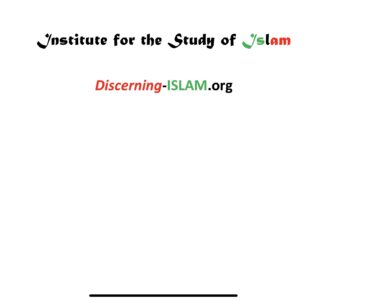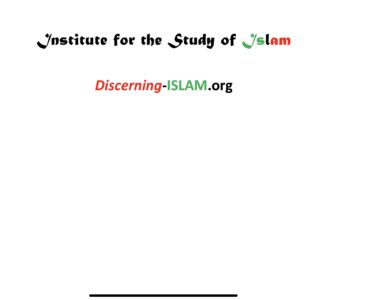
Capitalism And Islam
Debates over Islamʾs economic implications are even more heated and inconclusive than debates over its social and political implications. Traditional texts and authorities provide countless blueprints for an ideal Muslim family and polity but not for an Islamic economy. The Qurʿān explicitly endorses few economic values beyond private property, commercial honesty, and competition tempered by concern for the disadvantaged. The ḥadīth extol the virtues of pious merchants in tones that would be familiar to any reader of Poor Richardʾs Almanack. Yet these adages hardly amount to a business-class creed or an Islamic counterpart to Calvinism. The sharīʿah (divine law) lays down firm rules both protecting personal wealth and discouraging excessive profits. However, the more rigid the rules, the more ingenious were the loopholes that judges devised to avoid enforcing them.
During the nineteenth and twentieth centuries, Muslims and Westerners tried to articulate a clearer set of economic imperatives for Islam that could be either reconciled with or distinguished from competing models of capitalism, socialism, and communism. Premodern texts and practices are malleable enough to lend useful if inadequate support to many of these efforts. By and large, however, Islamic traditions have been most conducive to the development of indigenous capitalism and most hostile to the importation of communism. Sporadic enthusiasm has appeared for nascent theories of Islamic socialism in a few important countries, such as Egypt, Pakistan, Indonesia, and Iran. Yet even the most popular advocates of Islamic socialism are colored by secularist and heterodox reputations that severely limit their appeal to the Muslim mainstream.
Although modern debates over Islamic economics have focused primarily on the relation between religion and capitalism, those debates have moved in three different directions. At first, attention focused on Western arguments that Islam is an obstacle to capitalism. Gradually, Muslim and Western writers converged in viewing Islam as supporting a variety of capitalism. Most recently, Islamic modernists have combined a wide assortment of economic theories and religious programs to portray Islam as a superior alternative to capitalism.
Islam As An Obstacle To Capitalism
Both Orientalists and social scientists have emphasized Islamʾs supposed incompatibilities with capitalism, but their explanations typically diverge into theological versus institutional analysis. Orientalists tend to characterize Islam as inherently contradictory to capitalism because of basic and unchangeable doctrines, such as fatalism, other worldliness, and disdain for lending money at interest. These polemics often reflect and reinforce crude popular prejudices against Islam by providing them with a patina of pseudoscientific authority.
Social scientists, by contrast, focus on situational and perhaps temporary tensions between Islam and capitalism. They identify these tensions with particular historical conditions and structures such as feudalism, sultanism, and imperialism. Compared to Orientalists, social scientists are more likely to view conflicts between religion and economics as partial, not all-encompassing, as rooted in malleable institutions and relationships, not in mindless dogmas and dictums. Social scientists tend to think in terms of an adaptive, “historical Islam” rather than a formative, “ethical Islam.” “Historical Islam” mirrors predominant cultures and ideologies, whereas “ethical Islam” actively tries to shape them. The former justifies ruling institutions and groups, the latter guides and limits them.
By viewing Islam as less powerful in molding the world, social scientists also portray it as less culpable in retarding capitalism. If Muslims lagged behind others in accumulating private wealth and investing it in more productive enterprises, this was not because of their religion’s imagined hostility to economic progress. The most serious obstacle to capitalism was the inhospitable foundation of political, social, and economic institutions that would have stunted entrepreneurs no matter what their degree or brand of piety. Capricious sultans and intriguing concubines, greedy tax farmers and unruly mercenaries, absentee landlords and landless peasants, mosaic societies and frozen classes, unintegrated markets and ungovernable hinterlands, relentless warfare and foreign encroachment — these were the crippling weaknesses of the Muslim world, not the spiritual or moral shortcomings of its creed.
Whereas many social scientists can envision capitalist revolutions among Muslims who refashion their institutions, most Orientalists cannot. Because social scientists view religion as just one part of a complex Islamic civilization, they can imagine Islam adapting to capitalism and even promoting it in response to pressures from a changing environment. Because Orientalists view Islam as an immutable mentality that affects all other aspects of life, they expect it to distort and defeat capitalist impulses from any source, foreign or domestic.
Islam As A Variety Of Capitalism
Although Orientalists and social scientists counted and weighed religionʾs supposed burdens on development, economic historians began to turn the debate in a novel direction. They argued not only that capitalism in the Muslim world was more advanced and widespread than previously assumed but also that Islam itself deserved much of the credit for these achievements. Both Western and Muslim writers described a vibrant merchant capitalism linking the major cities of Asia and Africa in a vast intercontinental network stretching from the Silk Road to the Gold Coast, from the Sahara to the Spice Islands, from the Black Sea to the Cape of Good Hope.
Across city-states and multinational empires, in agrarian kingdoms and maritime principalities, Muslims shared a cosmopolitan culture that was carried not by the soldier or the bureaucrat but by the itinerant trader who often doubled as a mystical missionary. Particularly in non-Arab regions, the Ṣūfī merchant became the very embodiment of international Islamic civilization, uniting religion and commerce, town and country, sober mysticism and flexible orthodoxy. In many ways, Islam seemed to express the special ethos of a transnational, urban middle class that could most easily adapt to its lunar calendar and devotional rigors, its prudish manners and charitable bent. Muslim traders and preachers helped popularize prophetic traditions exhorting frugality, modesty, and diligence to the point where converting to Islam might have seemed like embracing capitalism as well.
Historians and economists frequently argue that this florescence of international commerce could have promoted industrial revolutions throughout the Islamic world if Muslims had been able to resist the onslaught of European imperialism. From this viewpoint, the decisive inhibitor of capitalist development was not the inherent weakness of Islamic thought or the rigidity of outmoded institutions, but the overpowering force of Western arms and avarice. Indeed, in many countries, Europeʾs commercial and colonial invasions shattered native crafts and manufacturing. Flooding one region after another with cheap, mass-produced goods, Western traders often deindustrialized the very economies they were integrating into the modern world market.
The sophisticated long-distance trade that for centuries had been both a fountain and a fruit of Islamic civilization could not survive the industrial revolution and the age of imperialism. As long as the power of rival regions was either remote or in check, Islam nourished a distinctive and durable form of international capitalism. However, once Europeʾs competitive advantages approached global hegemony, the rules and limits of economic development were no longer set by local actors and resources.
Islam As An Alternative To Capitalism
As capitalism became more firmly identified with foreign domination, it lost some of its appeal to Muslims. Rather than asking whether Islam obstructed capitalism, Muslim reformers and nationalists began to see Western economic models as blocking their own paths to independence and prosperity. Instead of stressing those aspects of Islam that had promoted capitalism in the past, they argued that a more authentic and coherent Islamic economics could surpass capitalism in the future.
Efforts to articulate a distinctive Islamic economics are quite recent, taking off during the petroleum boom of the 1970s. Thus far, the most interesting innovations have been not in theories but in structures and practices. The prevailing theoretical tendencies are unmistakably capitalist, stressing the primacy of private property and free enterprise. There is a heightened emphasis on cooperation between the private sector and the state as well as between Muslim firms and governments internationally. There is considerable discussion of economic inequality in the Islamic world and of the need for a more just distribution of wealth both within and between Muslim nations. Moreover, there is a common assertion that ownership of land and natural resources is a public trust that must be safeguarded for the benefit of future generations. Hence, in the Muslim world, as elsewhere, contemporary economic thought is increasingly preoccupied with social harmony, global interdependence, and environmental preservation.
The hallmark of this emerging Islamic capitalism is an impressive array of new institutions that are strikingly multifunctional and multinational. The pivotal role belongs to a few dozen big, state-sponsored Islamic banks that seek to centralize investment and power while sharing risk and profit. To preserve their claim to an Islamic pedigree, these enterprises avoid paying interest at fixed rates. Instead, they generally offer depositors a share in realized gains and losses. Because they ask depositors to accept considerable risk, they often require borrowers to relinquish a degree of managerial control. Although these policies do not alter formal ownership, they nonetheless create a kind of involuntary partnership between depositor, lender, and debtor, who all become joint investors.
The Islamic banks blend the activities of accumulation, appreciation, and speculation in an unusually explicit manner. The prominence of multipurpose banks is not surprising in economies that have large foreign-exchange surpluses but weak capital markets and infrastructures. The overdevelopment of financial institutions might compensate for the underdevelopment of business associations in general, but it creates some peculiar organizational hybrids. Depending on its particular mix of projects and customers, an Islamic bank can combine the roles of an investors’ syndicate and a stock market, a mutual fund and a credit union, a commodities exchange and a casino.
The Islamic banks are also distinguished by their mammoth international transactions and their well-publicized political connections. The banks are popular conduits for workers’ remittances, pilgrimage expenses, and petrodollars. They are instrumental in recycling capital from oil-producing states to poorer countries with large surpluses of land and labor. Most Islamic banks are openly allied with government agencies, political parties, royal families, social movements, and liberation struggles. These coalitions frequently cut across national borders, projecting a common set of political and ideological conflicts throughout the Muslim world.
Malaysian peasants making installment payments to the Pilgrims’ Investment Fund are also subsidizing the ruling partyʾs affirmative-action program for Muslim entrepreneurs. Foreign pilgrims and guest workers in Saudi Arabia use Islamic banks to support families and shops all over Asia and Africa. Oil revenues from banks in the Persian Gulf countries are paying unemployed Egyptians to reclaim Sudanese farmland, financing Turkeyʾs governing alliance of Islamic politicians and business people, arming Muslim fighters in Bosnia, Afghanistan, and the Philippines. The Russian Federation is asking Islamic banks to combat Iranian influence in the newly independent republics of central Asia with loans to import prayer leaders from Egypt, Qurʿāns from Pakistan, and teachers from Turkey.
The practice of Islamic economics is more advanced than the theory; its resources and organizations are more crystallized than its goals. Although its proponents insist that Islamic economics is a clear alternative to existing systems, it looks more like a financially-driven variety of capitalism with a keen aptitude for building transnational political ties to offset its continued weakness in both local and global markets. Some of the more unconventional Islamic investment companies have suffered mismanagement and corruption, generating sensational stories about bankruptcies, kickbacks, and secret arms deals. In general, however, their impact is conservative and anti-revolutionary.
Domestically, the Islamic firms support moderate, right-of-center democrats and modernizing authoritarians against religious radicals and leftists. In the balance of power among Muslim states, they are firmly identified with the mainstream leaders of the Organization of the Islamic Conference. They help to strengthen alliances between Saudi Arabia, Egypt, Turkey, Pakistan, Indonesia, Malaysia, and Nigeria while countering the influence of Iran, Libya, and Iraq. In the global economy, they use their leverage in financial markets to press the advanced industrial countries for concessions in trade, investment, and technology transfer. Nevertheless, they demand not a new world economic order but merely higher standing in a more flexible hierarchy of nations.
Capitalism And Islam
410 – 011
Home
Last Update: 02/2021




